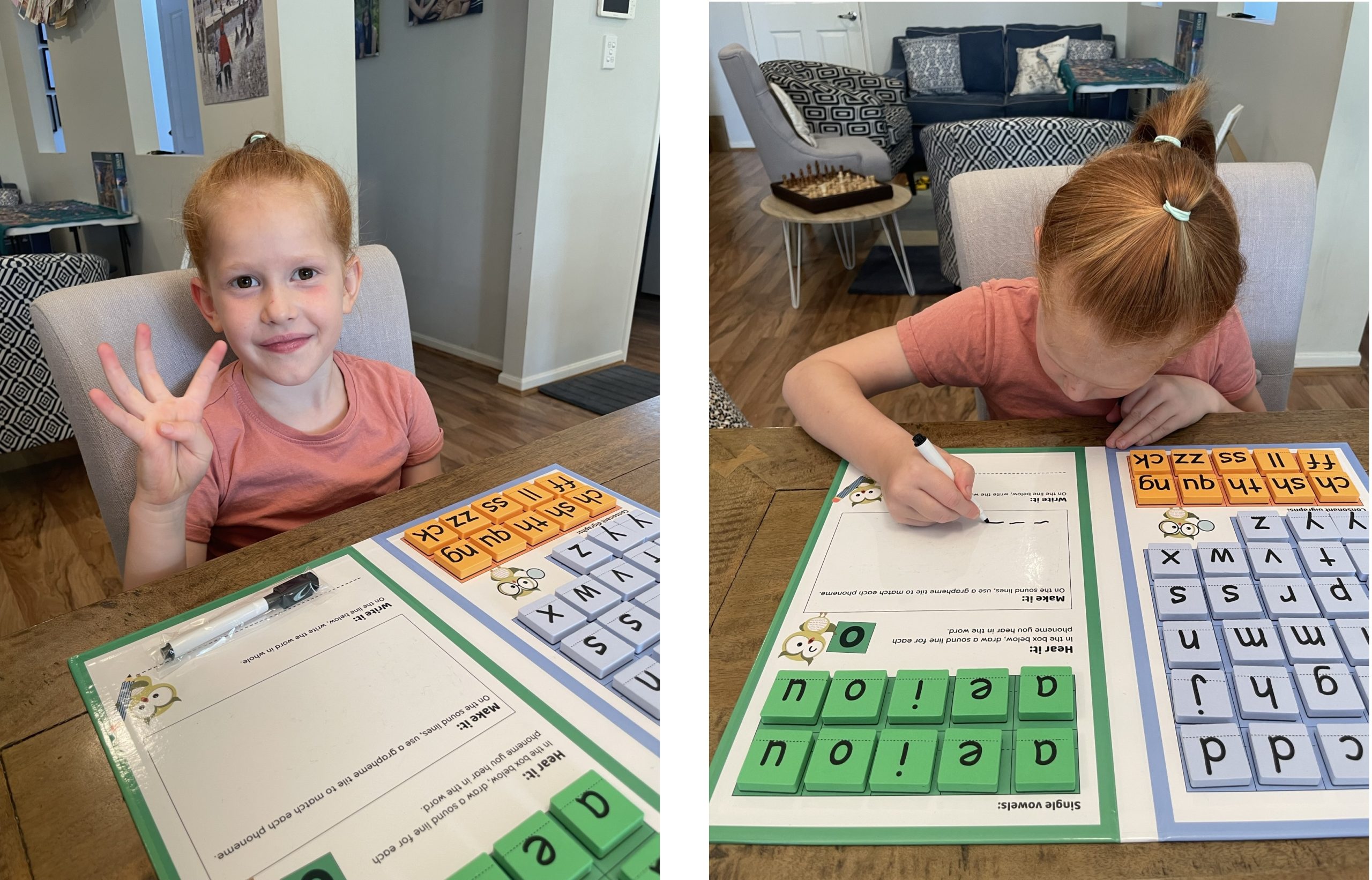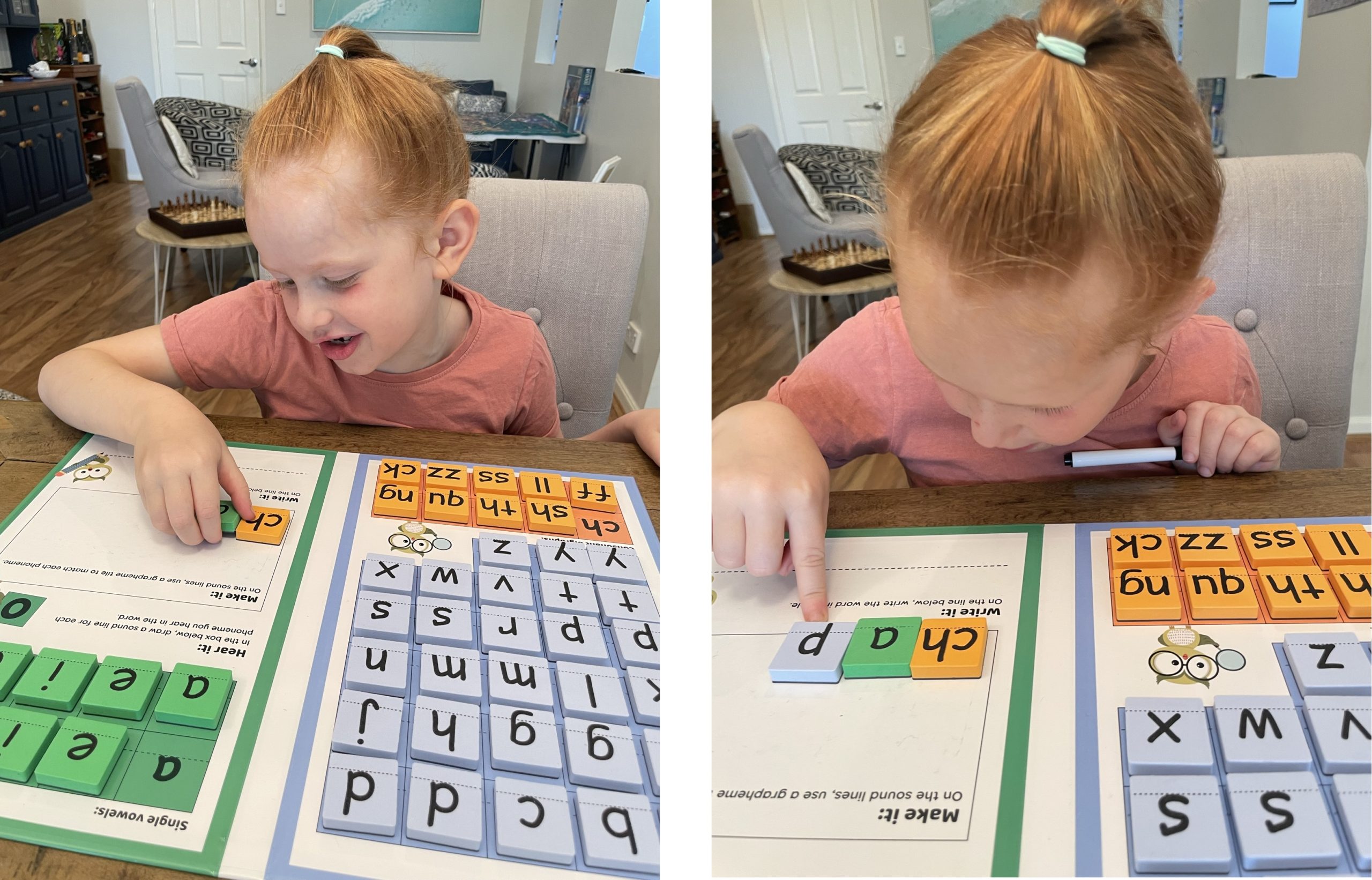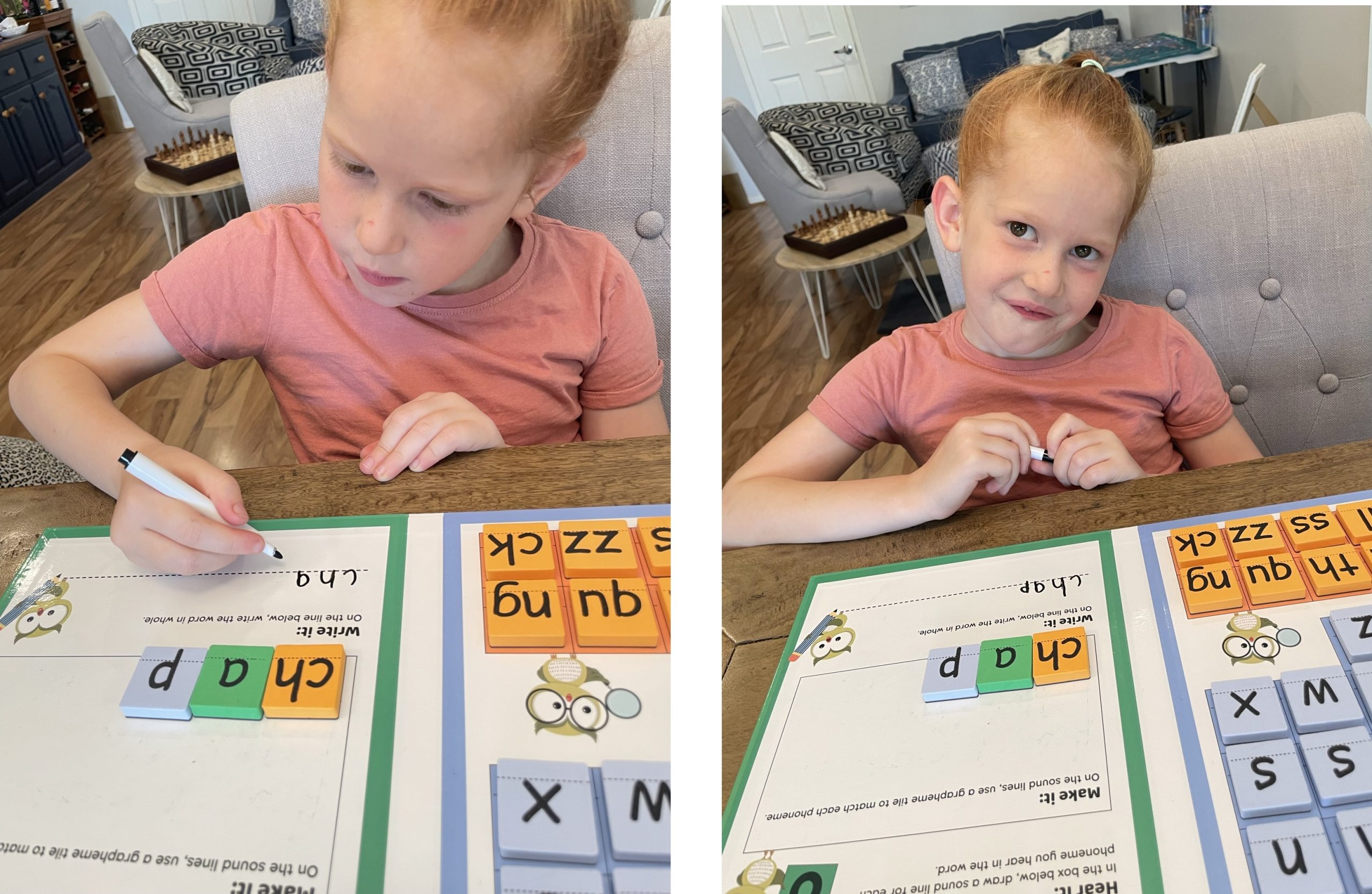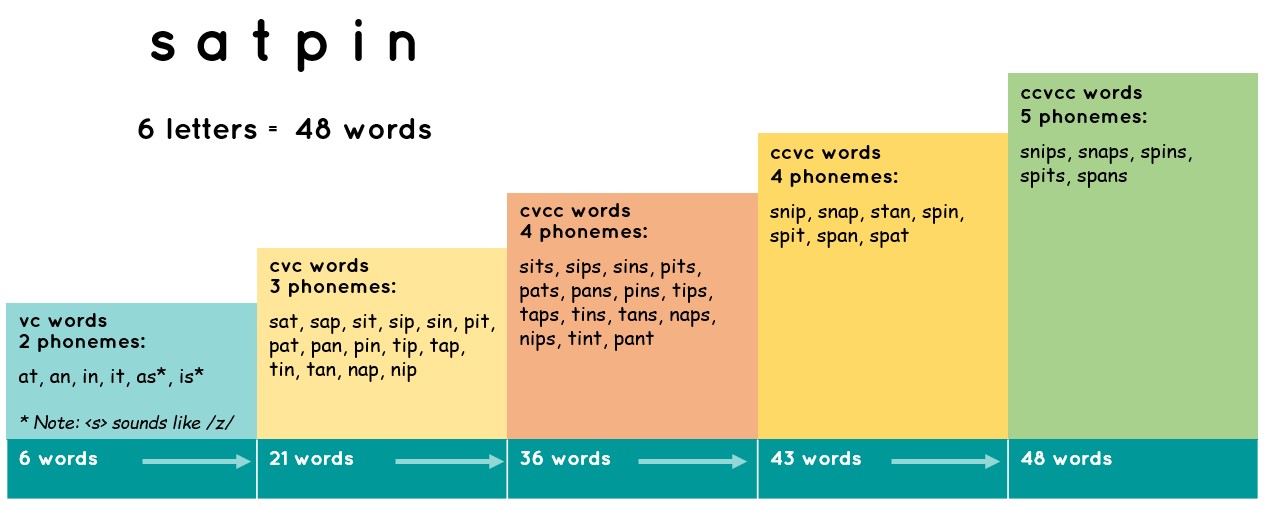A Powerful Tool - A Tool to Support
The Powerful Vowels kits are a tool to support most existing evidence-based synthetic phonics programs (free or commercial). The kits are not a stand-alone program. The Powerful Vowels kits have been designed through consultation with educators, speech therapists, literacy specialists, parents AND most importantly, tested with children.
A Powerful Vowels kit is a folder that holds magnetic foam grapheme (letter) tiles representing the English alphabetic code. Within the folder, there is a space allocated for children to create words using the letter tiles then write the words. The folder is a self-contained and ready-made phonics instructional tool that is interactive for students.
Using durable materials, the kits have been developed to a high standard ensuring they last longer than home-made / DIY resources. They stack easily and are portable for busy teachers. The folder is made of sturdy board and the EVA foam magnetic tiles are neatly organised on its magnet-receptive surface. This display allows you to quickly find the tiles you need and maintain an engaging pace of instruction. Once you are finished, simply close the folder to keep the tiles stored in place.
The steps listed in the kit prompt learners to actively engage with the tool. Learners are asked to count the phonemes in a word, use the allocated space to map the phonemes, create the word using the grapheme tiles then write the word. By incorporating a multisensory approach, children are more engaged, and learning becomes more concrete.



Hear it:
Phonemic awareness is an essential foundational skill in reading and writing.
This step prompts learners to tune into the individual phonemes in words. Each phoneme must have its own count. Similar to Elkonin boxes, learners draw a line to represent each phoneme. This is when an adult can detect errors and model accurate mapping of phonemes before they proceed.
Make it:
Automatic grapheme-phoneme correspondence (letter-sound association) supports fluency in reading and writing.
This step prompts learners to match the graphemes (letter tiles) to the individual phonemes in words. Each phoneme must have a corresponding grapheme. This is when an adult can detect errors and model accurate matching of graphemes before they proceed to writing the word.
Write it:
Writing the words helps imprint the spelling into long-term memory.
This step prompts the child to write the word by following the model they created using grapheme tiles. The learner has been carefully scaffolded to reach a successful outcome. Success is rewarding and builds confidence in young learners.


Practicing grapheme-phoneme-correspondence repeatedly supports the development of core reading and spelling skills in children.

